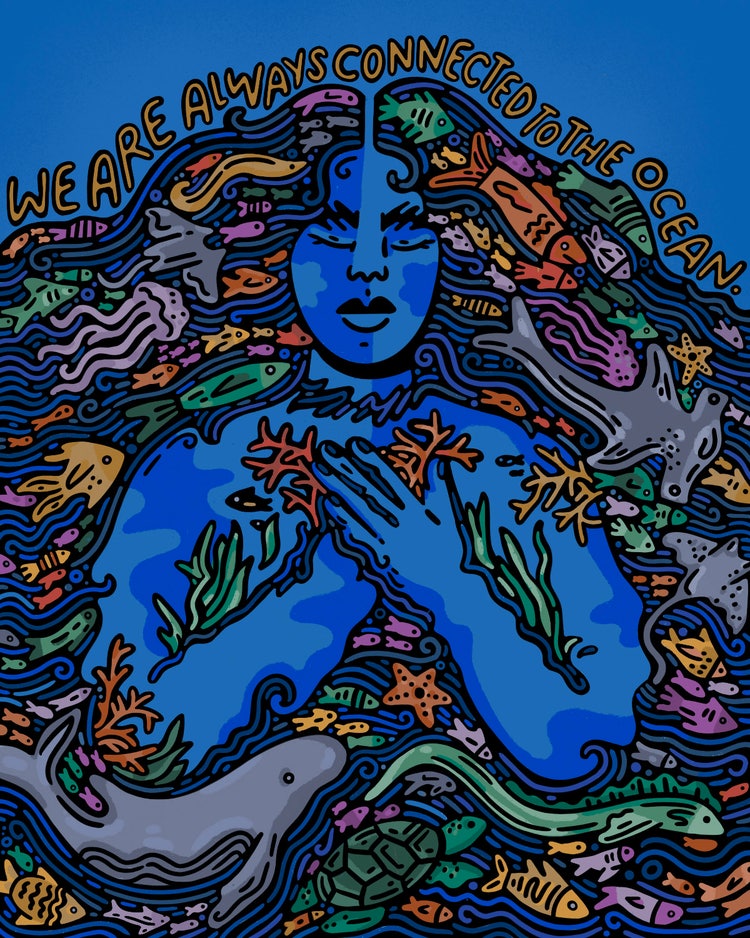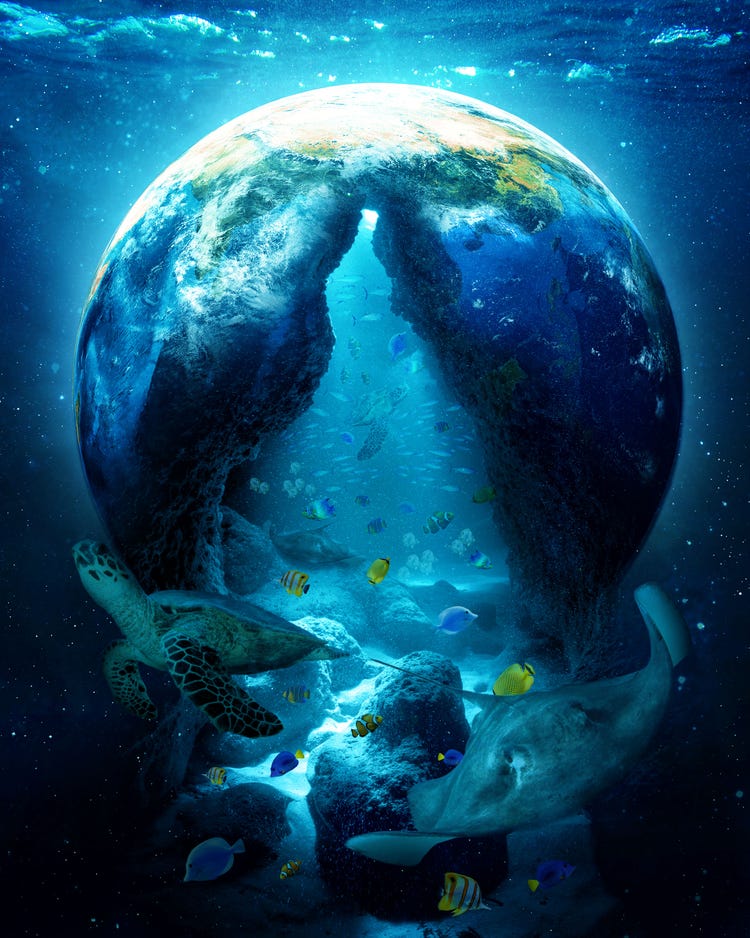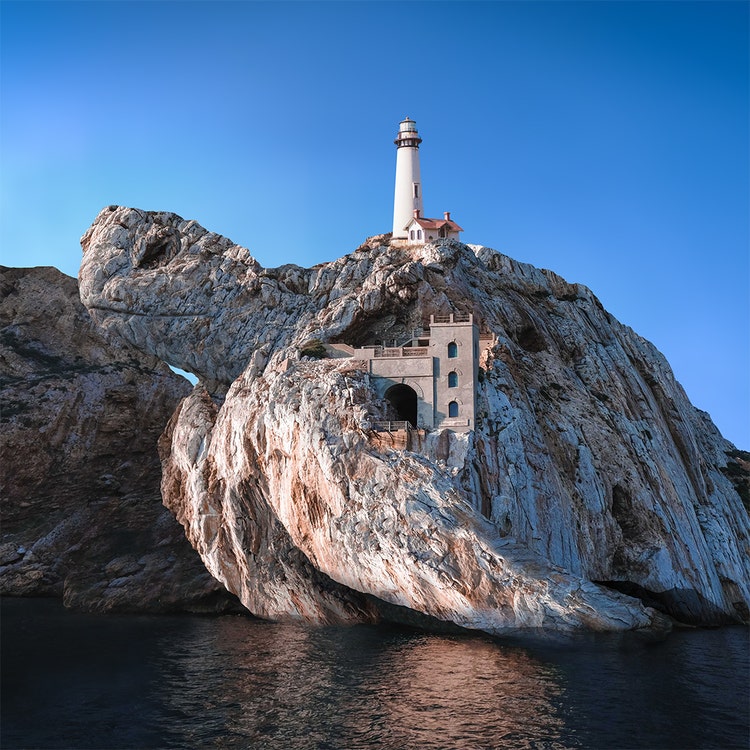Using art to advocate for the ocean

Image credit: Kelly Malka
The looming challenges of climate change and its impact on the planet have never been more urgent, but in many ways global environmental issues can seem far removed for the average person. In this area, the ocean often goes unnoticed – though it covers more than 70% of the Earth’s surface. “Despite its importance, the ocean doesn’t get nearly enough attention or protection,” says Tacy Trowbridge, lead for global education thought leadership and advocacy at Adobe, and host of The Creative Educator Podcast.
Because of this, a new approach is critical. Richard Vevers, founder and CEO of The Ocean Agency, an international nonprofit dedicated to marine conservation, believes creative storytelling about ocean science can inspire new generations of conservationists. “We’re constantly sharing facts about the ocean that go in one ear and out the other,” Vevers says. “What we need is to engage people.”
Connecting people with environmental issues demands not just science — but art. Stories, visuals and immersive digital experiences have the power to engage and tap into emotion. And emotion can help break down the barriers to create action that impacts actual change.
When digital meets conservation
Technology and digital tools are integral to conservation efforts and can help solve ocean science education’s biggest challenge – exposure to the masses, who are unable to experience the world below water for themselves. Visual storytelling and digital creativity provides access for people to explore the oceans in ways they’ve never been able to before. Immersive experiences help people experience life underwater – like when The Ocean Agency took Google Street View underwater in 2014 and in 2021 when Adobe, Hydrous, and The Smithsonian teamed up to create ‘Coral Collections’ using Adobe Aero.
Artivism – when creativity meets activism
Artists and creators who have a passion for the environment are leveraging their influence and their audience to have a greater impact and draw millions of followers into environmental causes that can otherwise seem distant or far-reaching.
In 2021, the Ocean Agency partnered with Adobe on #CreateWaves, a campaign led by creators with the goal to empower digital artists to influence and inspire support for ocean conservation. In late May, Adobe and the Ocean Agency will launch the next phase of the #CreateWaves campaign to build public awareness and advocacy for ocean protection.
#CreateWaves illustrator and designer Kelly Malka, says, “I want to create [work] that has a very human element to it – to show that we’re always connected to the ocean - the food we eat, the air we breathe, the water we eat. The ocean is always a part of it. Art is my biggest tool that I have to empower a cause.”

Image by Kelly Malka

Image by Shaylin Wallace

Image by Martijn Schrijver
Digital creators posted more than 1,000 visual messages in response to the 2021 #CreateWaves challenge, some of which were featured at the global ocean conservation conferences and at the Ocean Decade Exhibition which launched at the UNESCO headquarters in Paris.
Shaylin Wallace a digital artist and influencer based in Wilmington, Del, created a 3D composition she described as depicting the earth and Ocean as one. Her goal with her artwork was to spread awareness that “whatever we do is going to have an impact good or bad,” she said. Photoshop artist Martijn Schrijver of the Netherlands said his surrealist images conveyed the message that that ocean impacts all animal life —on land or underwater.
Using art to teach science
Taking a different approach to teaching science, Dr. Kelley Lê, director of the UCI Science Project, is using art as the starting point for educators to engage students on ocean science and environmental issues. Lê worked with The Ocean Agency to use art lesson plans and activities for educators to apply research-based practices to transform science education.
“We can use creativity and creative imagery to help educate people and use the process of people creating their own artwork to help progress that onward communication,” says Vevers. “And using that not just to educate others, but also influence policy-making.”
Lê is also passionate about the power of art and digital media not only to educate but to activate students. “The Ocean Agency communicates these messages through imagery so we can feel what is actually happening to the ocean even if we’re not there — and be moved by it and be compelled to take some sort of actions,” says Lê. “It’s all about using creativity to get these messages across and raise awareness about the importance of the ocean and the need for action."
“Creativity gets you into that area where you want to act,” Vevers says. “And, if you hook someone early, you hook them for life.”